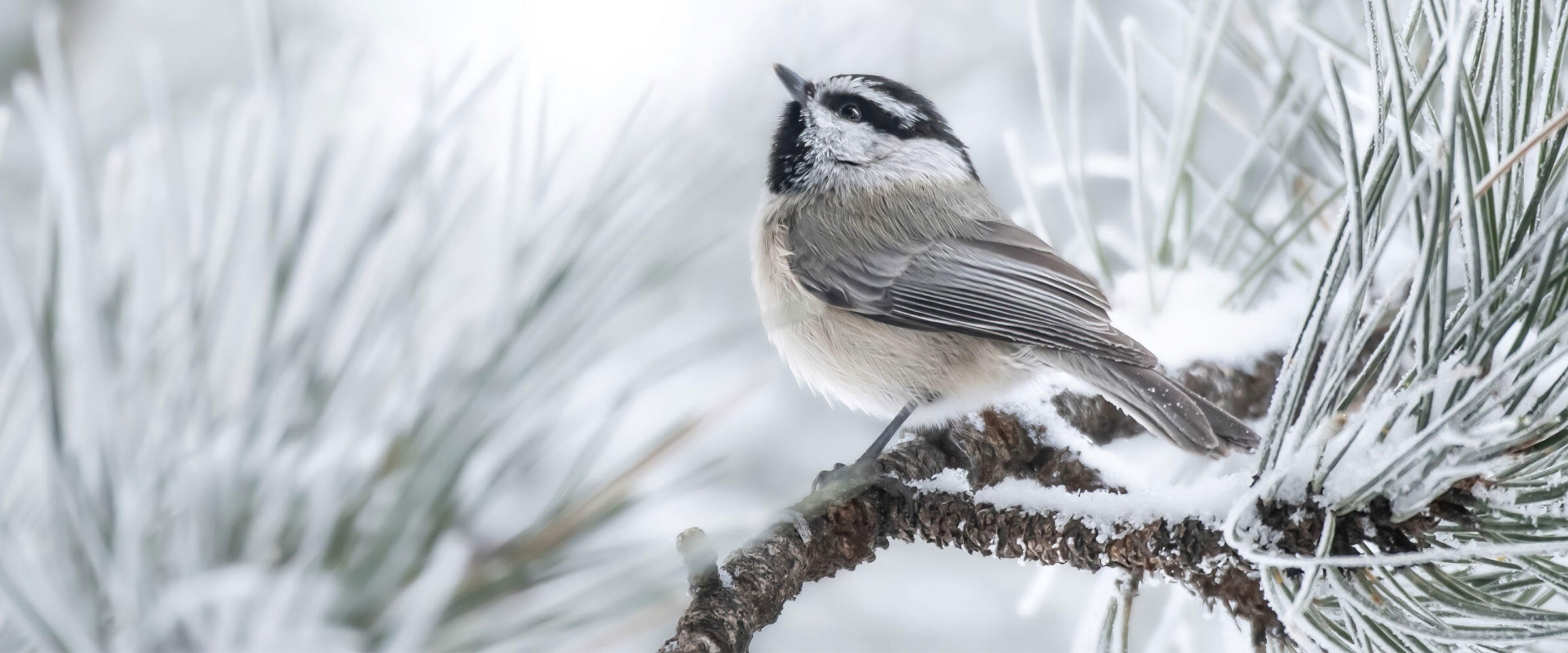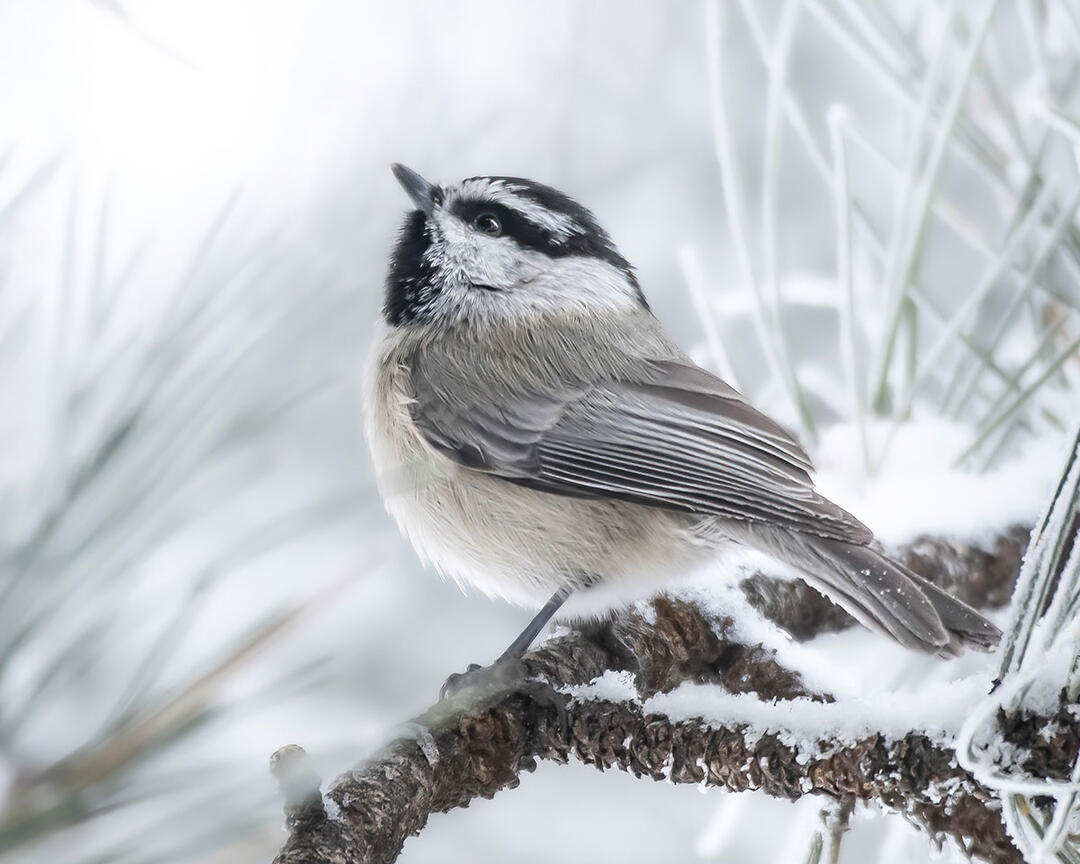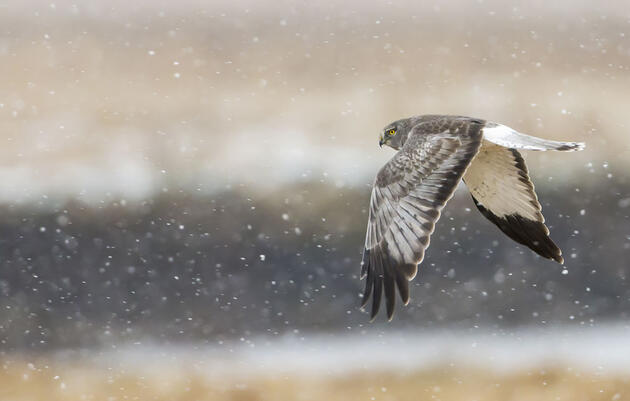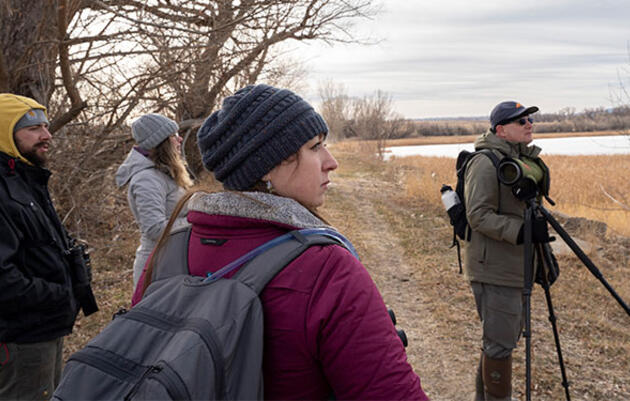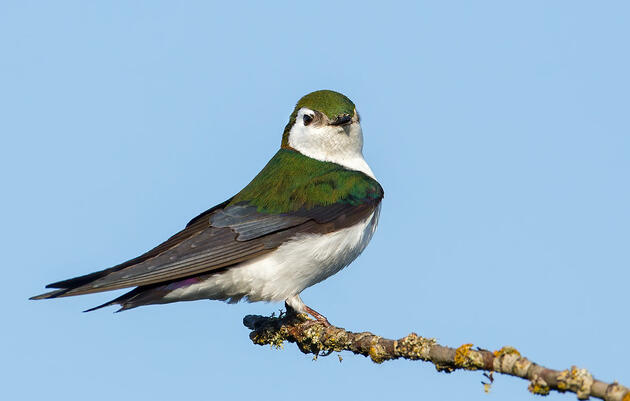Inclement weather was not a factor during this year’s Christmas Bird Count in terms of limiting Evergreen Audubon’s ability to get out and about. There was hardly any wind, no precipitation, and though it started out a bit chilly-single digits in some areas, it warmed up nicely into the lower 40s. In addition, despite the Mestaa’ehehe area (formerly Squ*w Pass) having about 18” of snow on the ground, the rest of our count areas had very little. In stark contrast, the streams had extensive stretches of ice with fewer open areas than we generally tend to see.
As for our participants, Evergreen Audubon had 79 folks in the field (22 more than our prior 53-year average) which yielded 156 field hours, 30 percent above average. A few groups deserve kudos for the many miles covered on foot: Brook Forest East, who covered 11 miles; Genesee, who covered 12 miles; Elk Management Area who covered 13 miles; and Mestaa’ehehe who covered 20 miles! We also had 53 feeder-counters, more than double our average number.
All this effort this year translated into some interesting numbers. While through the course of our 54-year history, we’ve averaged about 5,800 birds representing 47 species, this year we recorded about 8,800 birds representing 50 species. While it makes sense that having more participants would translate into seeing more birds, we attempt to make valid comparisons with prior years by calculating the number of birds per number of participants (or, more accurately, per number of party hours). More analysis is needed on this, but I can tell you now that the number of Mountain Chickadees, even with factoring in the birds per party-hour, was 130 percent above our 53-year average. I find this interesting because while we’ve seen some species increase and others decrease through the years, the number of Mountain Chickadees has on average held remarkably steady at about 4.9 birds per party-hour. This year we had 6.7 birds per party-hour.
Before moving on to more details on our results, it’s quiz time! Of the three accipiters, which has been seen the least frequently during Evergreen Audubon’s 54 Christmas Bird Counts, and which the most frequently? Did you know? Northern Goshawk and Sharp-shinned Hawk are pretty close for the most, and Cooper’s the least. Whew!
So, moving on, how do our results for 2022 fit in with what we’ve seen in recent years? For starters, we missed a couple of species that would have been great to see such as the Bushtit and Canyon Wren, and we had low numbers of Mallards (not as much open water) and Dark-eyed Juncos. That being said, we had a great count! We had good numbers of Wild Turkey, Red-tailed Hawk, Great Horned Owl, Steller’s Jay, Evening Grosbeak, House Finch, and Red Crossbill; and we set new high numbers for the Downy Woodpecker (81), Hairy Woodpecker (119), Northern Flicker (77), Mountain Chickadee (1,041), White-breasted Nuthatch (186), Pygmy Nuthatch (1,881), and Song Sparrow (18).
We also picked up a few species that we don’t always get: Cooper’s Hawk, Northern Saw-whet Owl, American Three-toed Woodpecker, and Common Redpoll. And then, (drum roll, please!) to top it off we added a species never recorded before in all our 54 years of conducting the Evergreen-Idaho Springs Christmas Bird Count! The Genesee group, headed up by Timo Mitzen, had a Pacific Wren, identified by photos and a sound recording. They also had a second stub-tailed wren that was photographed and subsequently identified as a Winter Wren. Just to clarify, these two closely related wrens, one largely confined to the eastern half of North America and the other primarily found along the Pacific Coast and a portion of the Northern Rockies, were, until 2010, considered to be one species, the Winter Wren. Both occur rarely in Colorado with the eastern Winter Wren being found slightly more often. Throughout all of Evergreen Audubon’s Christmas Bird Counts, there are only four prior Winter Wren records, all from the early 1970s, but there is no way for us to know which of the subsequent two species was actually found at that time. So, after almost a 50-year hiatus, we once again have had sub-tailed wrens, and for the first time a definite Pacific Wren and Winter Wren of the new species designation. Kudos to the Genesee team for doing such a superb job documenting their find!
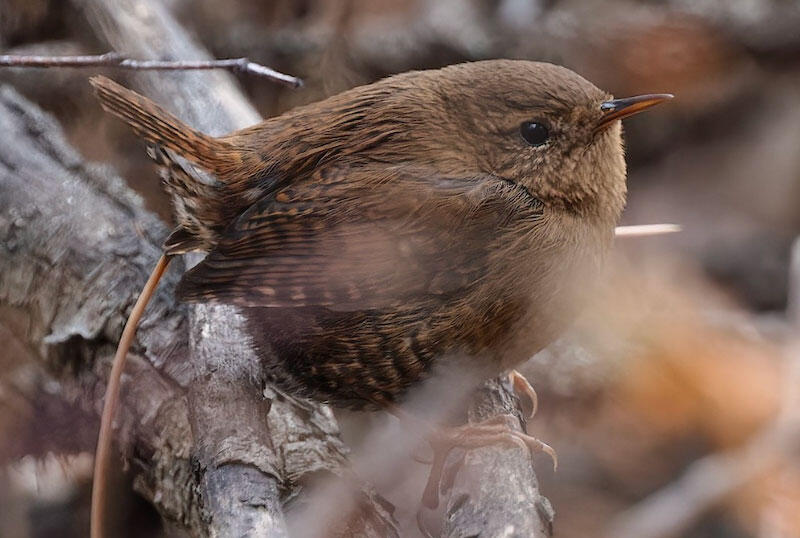
Members of Evergreen Audubon may recall that we are in a friendly competition with more than 2,500 other CBCs across the Western Hemisphere regarding our numbers of Mountain Chickadees and Pygmy Nuthatches. We have been Mountain Chickadee world champs for fourteen years running, and we’ve been Pygmy Nuthatch world champs a few times in that same period. With this year’s 1,041 Mountain Chickadees and 1,881 Pygmy Nuthatches, we are pretty much a shoo-in to retain our global dominance.
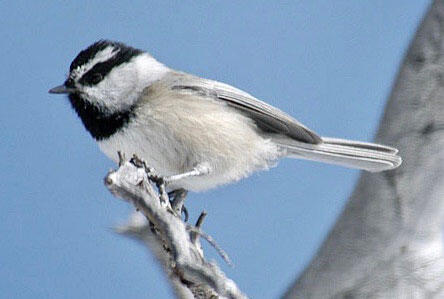
In getting things organized for this year, special thanks go out to those folks who stepped in at the last minute to create a team and make sure all of Evergreen Audubon’s areas got covered: Bob Santangelo, Susan Harper, and Ed Furlong did a great job taking on Evergreen East, which had been Marilyn Rhodes’s turf for decades; Timo Mitzen did an excellent job with Genesee; Kathy Madison assumed the mantle of leadership for Idaho Springs East; Ron Belak took on Kerr Gulch; and Emma Vasicek took over Brook Forest West. Thanks also to Susan and Bill Broderick who provided strong support for two different areas. Much gratitude to all of you! Additional thanks go to all of our other regular area leaders who got their crews through the day: JoAnn Hackos, Else Van Erp, Mark Meremonte, David Wald, Chris Goulart, Dwight Souder, and Larry White. And a great big special thanks to our feeder coordinator, Barbara Jean Gard.
Finally, it was wonderful to once again end our day of bird counting with a glorious evening of good fellowship, great food, and lively data compilation at our Tally Rally. It was truly a wonderful end to the day! Many thanks go to Lisa and David Wald for hosting the Tally Rally, to Rachel Hutchison and Lisa Wald for making the chili, to Stephanie Gomolka for organizing the potluck, to all those who contributed to the potluck, and to David Wald for compiling our data that evening.
See Evergreen Audubon’s full count results here.
Learn more about the Audubon Christmas Bird Count.

